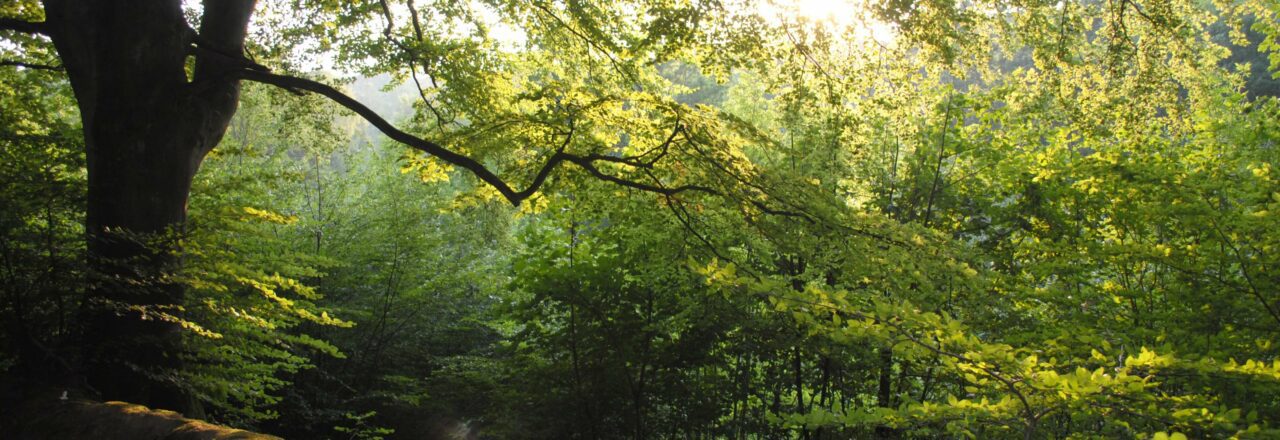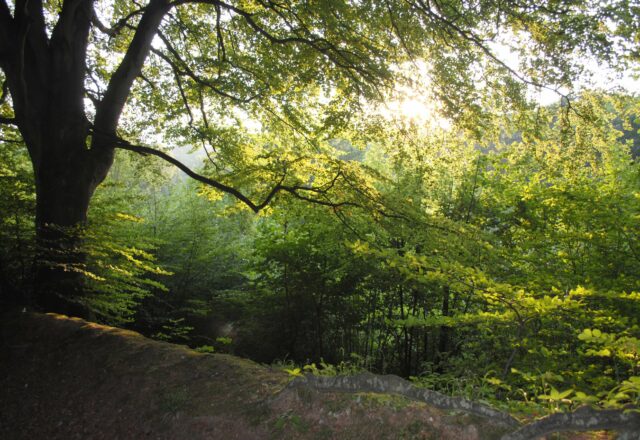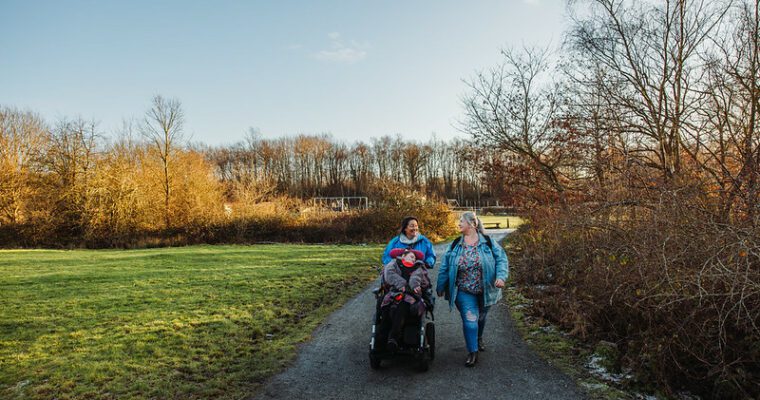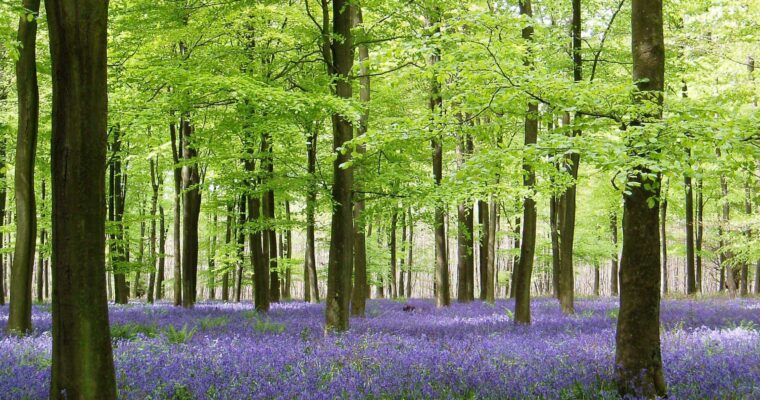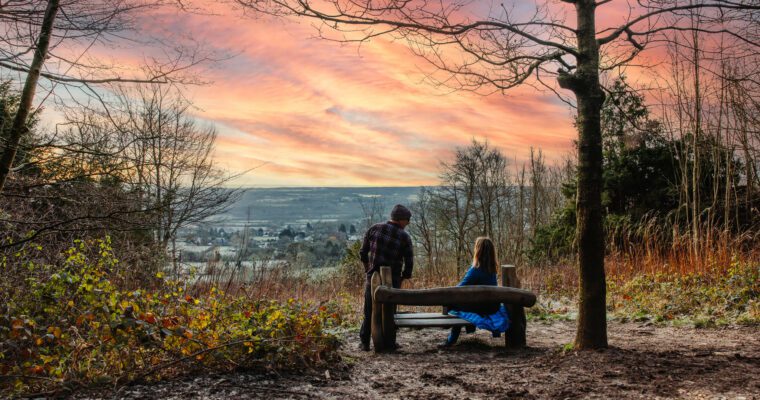Trees and woodlands are essential for life, they are one of our best hopes in mitigating climate change and supporting nature recovery
Find out more about our continuing work to protect trees and woodlands across the Kent Downs National Landscape and how you can help
The Kent Downs is one of Britain’s most wooded landscapes (23% woodland) and the majority of this is irreplaceable ancient woodland (70%).
Trees and woodlands are integral to the Kent Downs landscape and all life within it. In addition to planting new trees we must manage and protect our existing woodlands that provide vital homes for wildlife, plants, and fungi that cannot thrive in new woods including bluebells, wood anemones, ramsons, nightingales and nightjars, rare and beautiful butterflies, and lichens and fungi.
Right Tree, Right Place
We can help protect Kent Downs irreplaceable trees and woodlands and plant more trees by ensuring ‘Right Tree, Right Place’.
The most important thing to do is only plant UK sourced and pest free trees from Plant Healthy stock. If in doubt, don’t plant! Ensuring the biosecurity of new trees is vitally important to ensure that more tree diseases are not introduced which are likely to vastly outweigh any benefit that new planting.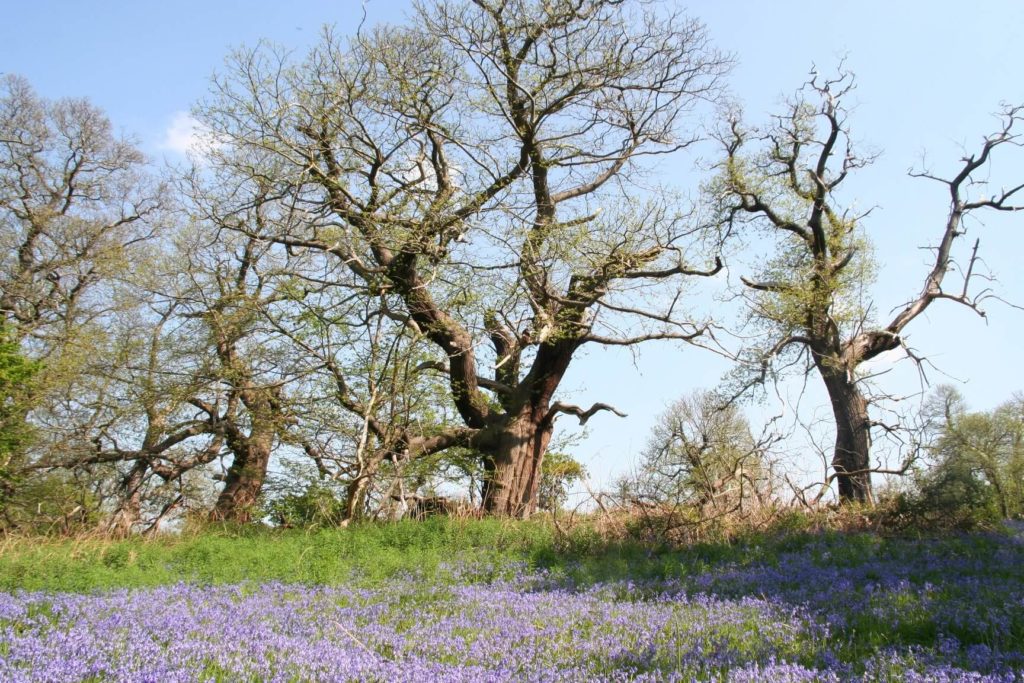
A good place to start is to replace lost woodlands or hedgerows and always avoid areas which are protected or valuable for other wildlife such as flower rich grasslands and heathland – it’s best to get a Springtime survey before planting trees.
Tree planting is just one element of successful tree establishment. There are lots of other important factors to consider such as soil type, tree species, where to plant, how to plant, and how you plan to care for the tree. In many cases tree planting will also require protection from deer and rabbits.
Visit The Woodland Trust for excellent guidance on what you How to plant trees.
Tree planting is important but sometimes allowing trees to naturally plant themselves, through natural re-generation, is better and certainly cheaper – always seek advice if you are uncertain.
Benefits of Sustainably Managed Woodlands
The benefits of sustainably managed woodlands and trees are vast:
– Support climate change mitigation and adaptation
– Greater resilience to pests and diseases and climate change
– Provide sites for ‘Nature’s Health Service’ for leisure, wellbeing, and adventure
– Support whole ecosystems of wildlife
– Contribute to local economies with markets in woodland products
A single 400-year-old-oak…(is) a whole ecosystem of such creatures for which ten thousand 200-year-old oaks are no use at all.
Oliver Rackham, Woodlands
Free and Subsidised Trees
Tree planting season is typically November to the February/March, you may be eligible for free or subsidised trees.
Ash Dieback – Tree Packs for Landowners
If you’re a landowner with ash dieback on your land you can plant trees now to increase species diversity, prevent tree diseases, and maintain a healthy ecosystem. Subsidised tree packs for each of the main Kent soil types are available from The Woodland Trust.
Free Trees for Schools and Communities
If you are a community group or school, you may be eligible for Free Trees for Schools and Communities from The Woodland Trust or Tree Planting Grants from The Tree Councils
Tree species in the Kent Downs
The tree species of the Kent Downs broadly follow the different soil types across the National Landscape – clay soils (with ash, hornbeam and oak); chalk soils (with ash, beech and yew) and free draining sands (with oak, birch and beech).

Tree Cover in The Kent Downs National Landscape


